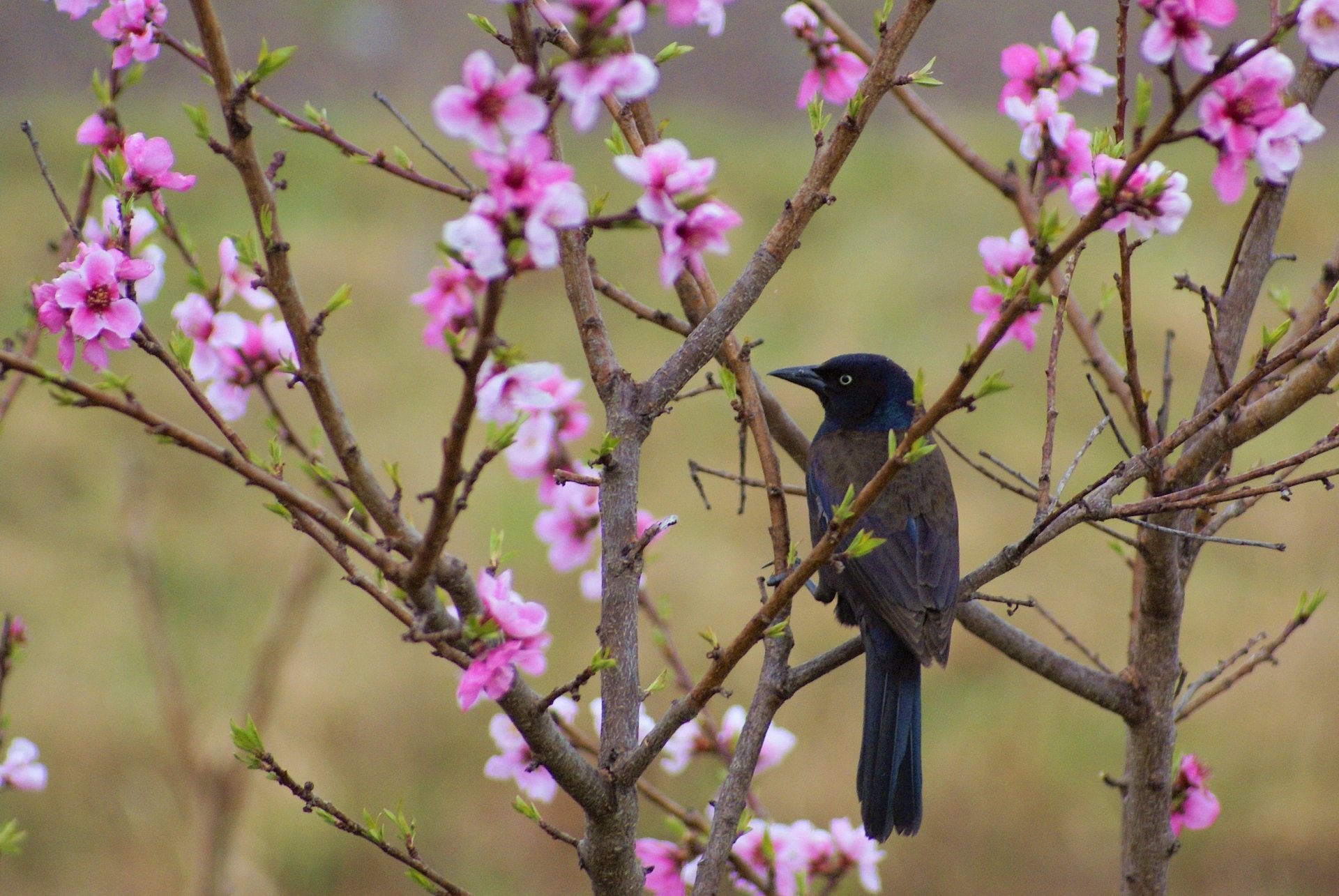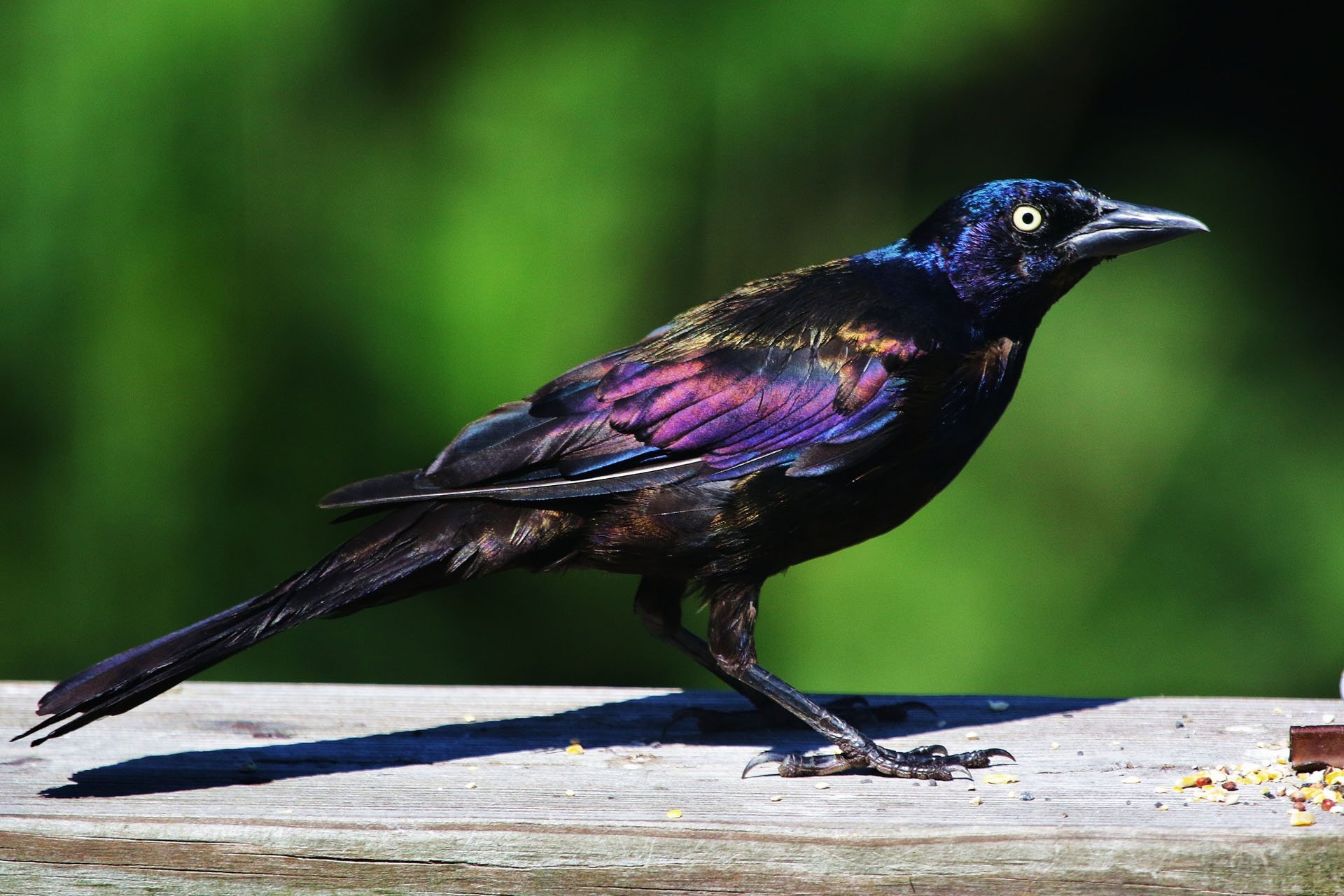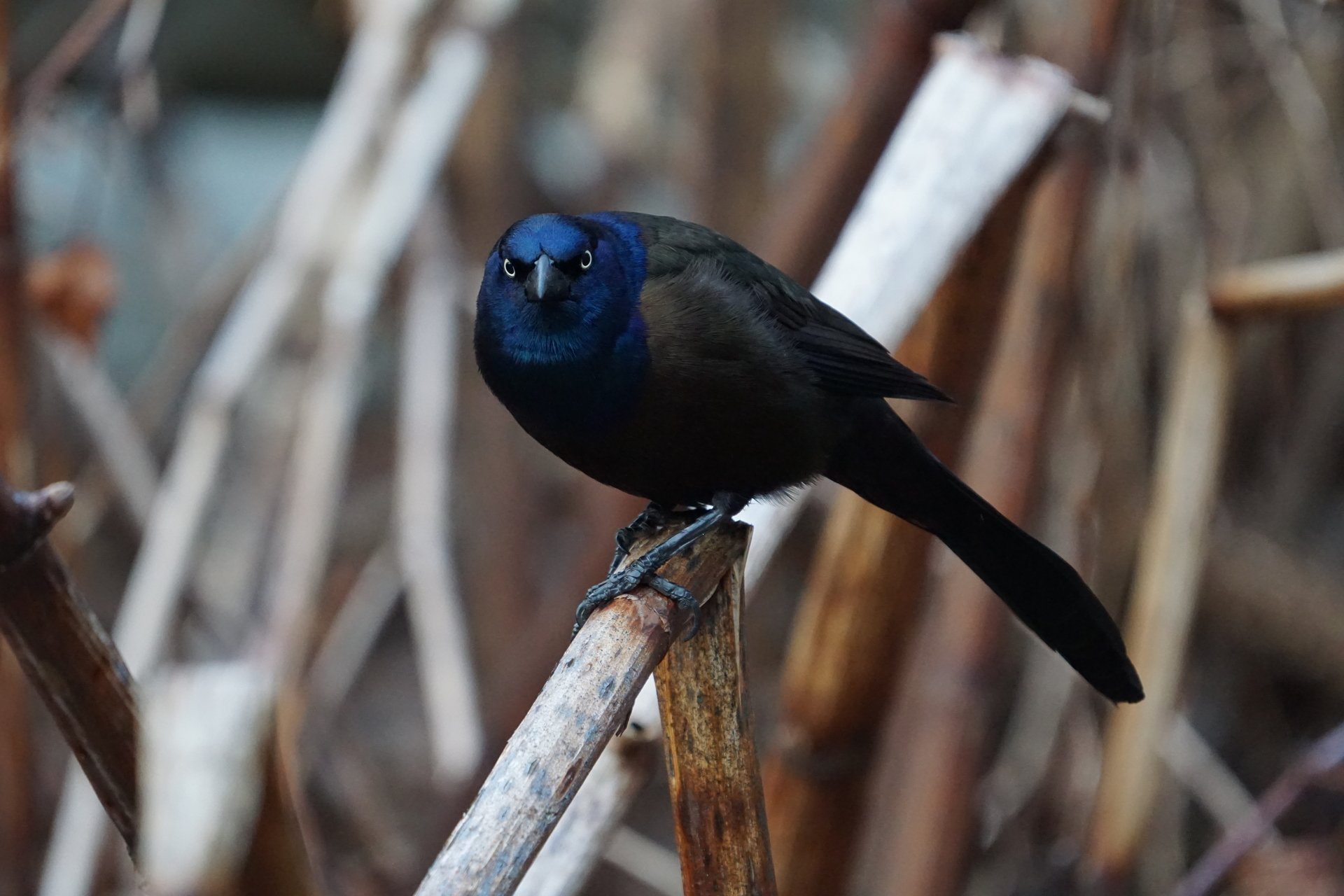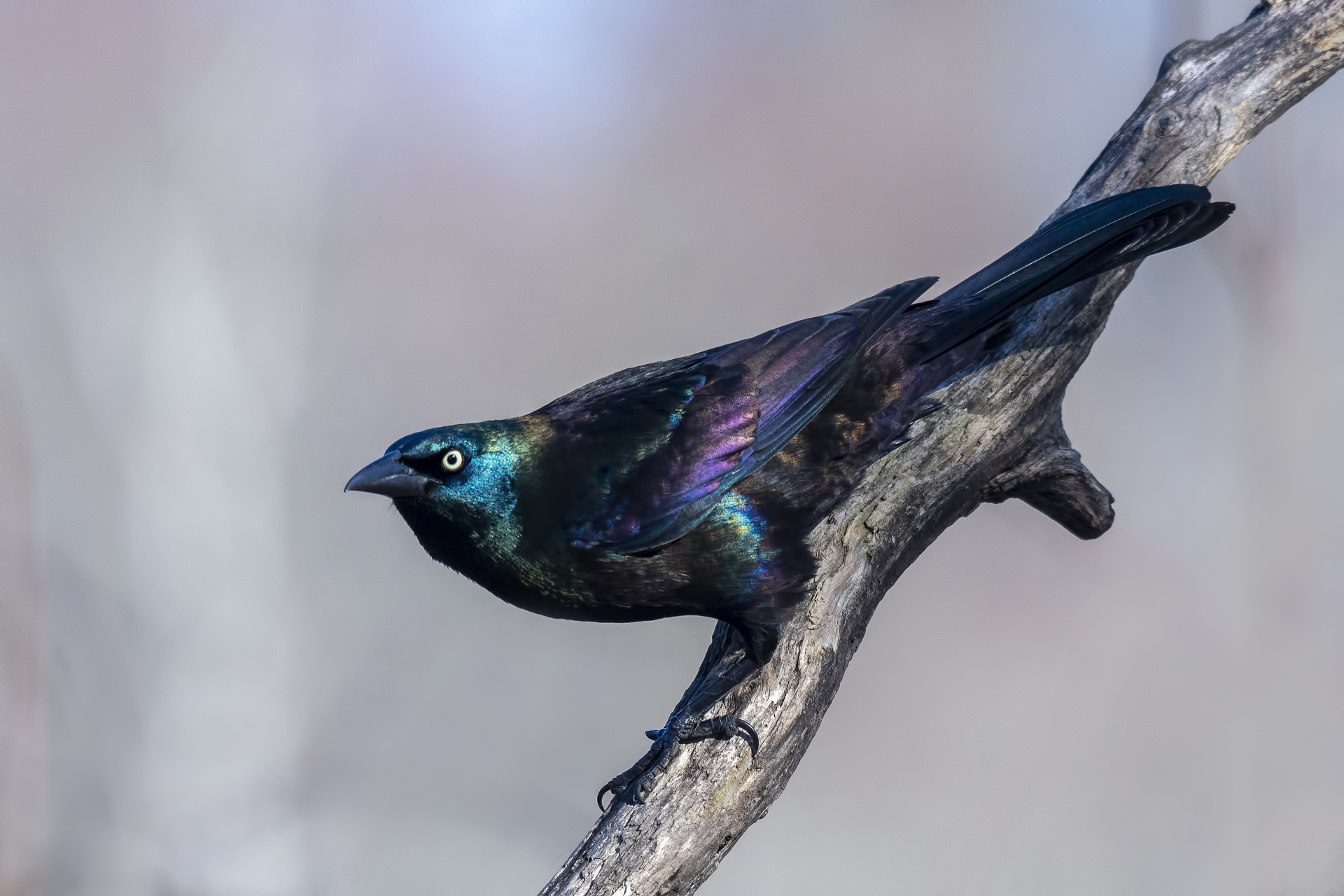Common Grackles
Common Grackles the largest member of the blackbird clan that regularly occurs in Massachusetts. Long-tailed and gregarious, grackles are hard to miss whenever they are present, as their feathers shine with iridescence and their piercing voices creak and whine across suburban Massachusetts. These adaptable birds can turn up in almost any habitat.
How to Identify Common Grackles
Grackles of both sexes are entirely shiny black, with patches of green and purple gloss. Their slightly-downcurved bills are long and dark, and their pale eyes stand out at quite some distance.
The best field mark for separating grackles from other blackbirds and similar species like starlings is the tail. Grackles have long, wedge-shaped tails that are especially visible in flight. Grackles are also quite large, exceeding a foot in length from bill to tail.
Common Grackles are often confused for other large black birds such as ravens or crows.
Common Grackle Behavior
Cereal grains are a favorite food of the Common Grackle, a consummate survivor whose glossy plumage and harsh voice are familiar to farmers and urbanites alike.
Where Do Common Grackles Live?
Common Grackles can breed in almost any sort of habitat – swamps, fields, riparian woods, beaches, grasslands, shrublands, and human settlements are all readily used. They routinely inhabit shrubby areas and swamps; the only habitat type grackles don’t seem to thrive in is dense old-growth forest, which means that Common Grackles probably were not all that common in most of Massachusetts before Europeans showed up.
Common Grackle Migration
In fall, grackles gather into large flocks before migration at communal roosts, some of which can be impressively massive (as many as one million birds!). Most grackles migrate a short distance south to pass the winter, but some few opt to brave the storms each year, often mixed with flocks of other blackbirds.
What Do Common Grackles Sound Like?
Common Grackles are gregarious and highly vocal birds. They can often be seen foraging on lawns or sitting on fences during spring and summer in suburban areas, uttering sharp chak notes or else singing their grating, rusty-hinge song.
Grackles & Swimming Pools
In late spring and summer, owners of swimming pools may be surprised to observe the large Common Grackle repeatedly dropping small white sacs into their pools. Those sacs are the excreted waste of young grackles. The adults then dispose of the sacs in the nearest body of water (often a pool), in an effort to keep a clean nest.
There are no apparent health risks associated with the fecal sacs, but it is recommended that you dispose of them before entering the swimming pool.
The best way to discourage grackles from targeting your pool is to cover the pool with a lightweight cover that can be easily removed. The good news is that this behavior only lasts as long as young are in the nest, about 2½ weeks.
If nest sites are known, you can also try thinning the trees in the fall, after the birds have left, which may make it less attractive as nest sites the following spring.
Threats Facing Common Grackles
Though they remain common and widespread as breeders in the Bay State, Common Grackles are showing signs of a decline in abundance according to the USGS Breeding Bird Survey.
Winter encounters with grackles occasionally spike in mild years but have been steadily trending downward over the past several years. Find out more about grackle population distributions in Massachusetts.
How Mass Audubon is Supporting Birds in Massachusetts
Mass Audubon works at our wildlife sanctuaries and beyond to ensure that the nature of Massachusetts continues to thrive. By scientifically monitoring Massachusetts birdlife, Mass Audubon informs important conservation decisions and launches targeted initiatives to help at-risk species. In addition, fostering healthy habitats, supporting native species, and educating people about the importance of nature conservation is critical to our success. Learn more about our work
How You Can Support Birds in Massachusetts
Mass Audubon supports birds like the Common Grackle every day, but we couldn’t do it without the support of our 160,000+ members.
Help support Common Grackles, and birds like them, by becoming a member today.
Upcoming Bird Programs
Birdwatching Basics: Spring Bird Activity
-
Online
-
Thursday, April 3
7:00-8:30pm
Adults
Woodcock Walk
-
Tidmarsh Wildlife Sanctuary, Plymouth
-
Friday, April 4
6:30-8:00pm
Adults
iNaturalist Walk
-
Moose Hill Wildlife Sanctuary, Sharon
-
Saturday, April 5
9:00-11:00am
Adults & Families - 8 - 17
Stay Connected
Don't miss a beat on all the ways you can get outdoors, celebrate nature, and get involved.






